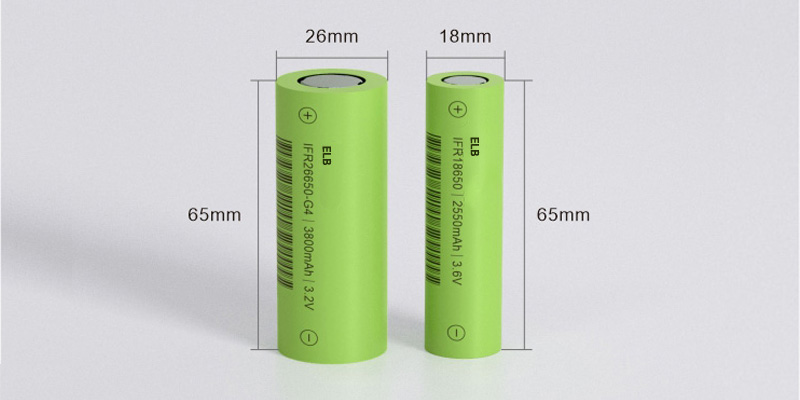26650 Battery vs 18650 Battery: The Ultimate Guide to Choosing the Right Power Source
In today's tech-driven world, lithium-ion batteries power everything from handheld gadgets to electric vehicles. Among the most popular cylindrical options are the 26650 and 18650 batteries, both delivering reliable performance but catering to different needs.
Whether you're a vaping enthusiast, a solar energy user, or an electronics hobbyist, choosing the right battery can significantly impact your device's efficiency and lifespan. This comprehensive guide breaks down the key differences, applications, and ideal use cases for 26650 vs 18650 batteries, helping you make an informed decision.

What Are 26650 and 18650 Batteries?
1. 26650 Battery: The High-Capacity Powerhouse
The 26650 lithium-ion battery (26mm diameter × 65mm height) is known for its larger size, higher capacity (2500mAh–5000mAh), and stable LiFePO4 chemistry. These batteries excel in high-drain applications like solar energy storage, power tools, and electric bikes, where extended runtime and durability matter most.
Key Advantages:
· Higher energy density for longer usage
· Superior thermal stability (safer for high-power devices)
· Supports deep discharge cycles without degradation
2. 18650 Battery: The Compact, Versatile Standard
The 18650 battery (18mm diameter × 65mm height) is the most widely used rechargeable lithium-ion cell, found in laptops, flashlights, and vaping devices. With capacities ranging from 1200mAh to 3600mAh, it balances power and portability, making it ideal for everyday electronics.
Key Advantages:
· Lightweight and space-efficient
· Higher voltage output (up to 4.2V)
· Proven reliability with decades of market use
Key Differences: 26650 vs 18650 Batteries
| Feature | 26650 Battery | 18650 Battery |
Chemistry | Mostly LiFePO4 (safer, longer lifespan) | Mostly NiCoMn (higher energy density) |
Size/Weight | Larger & heavier (26mm diameter) | Compact & lightweight (18mm diameter) |
Capacity | 2500mAh–5000mAh (longer runtime) | 1200mAh–3600mAh (balanced performance) |
Voltage | 3.2V nominal (3.65V max) | 3.7V nominal (4.2V max) |
Discharge Rate | Better for high-drain devices | Suitable for moderate-power electronics |
Best For | Solar storage, EVs, power tools | Flashlights, vapes, laptops |
Which Battery Should You Choose?
1. When to Pick an 18650 Battery
· Portability is key – Ideal for flashlights, vaping mods, and laptops where space matters.
· Higher voltage needed – Delivers up to 4.2V, perfect for high-performance electronics.
· Widely available – The most common rechargeable lithium battery, easy to replace.
2. When to Pick a 26650 Battery
· Longer runtime required – Best for solar power banks, electric bikes, and industrial tools.
· High-drain applications – Handles continuous heavy loads better than 18650.
· Enhanced safety – LiFePO4 chemistry reduces overheating risks.
Safety Alert: Can You Mix 26650 and 18650 Batteries?
Never mix different battery types!
Voltage mismatch can cause overcharging or overheating.
Capacity differences lead to uneven discharge, shortening battery life.
Different chemistries (LiFePO4 vs. NiCoMn) react unpredictably when used together.
For optimal performance and safety, stick to one battery type per device.
Final Verdict: Which Battery Wins?
· For everyday gadgets (vapes, flashlights, laptops) → 18650 (compact, high-voltage).
· For high-power needs (solar storage, EVs, power tools) → 26650 (higher capacity, longer lifespan).
Both batteries have unique strengths—your choice depends on power needs, device compatibility, and runtime requirements.
Looking for the Best Battery for Your Device?
Whether you need long-lasting energy storage or compact power solutions, understanding the 26650 vs 18650 debate ensures you pick the right battery. Check your device’s specifications and match them with the ideal battery type for peak performance!

